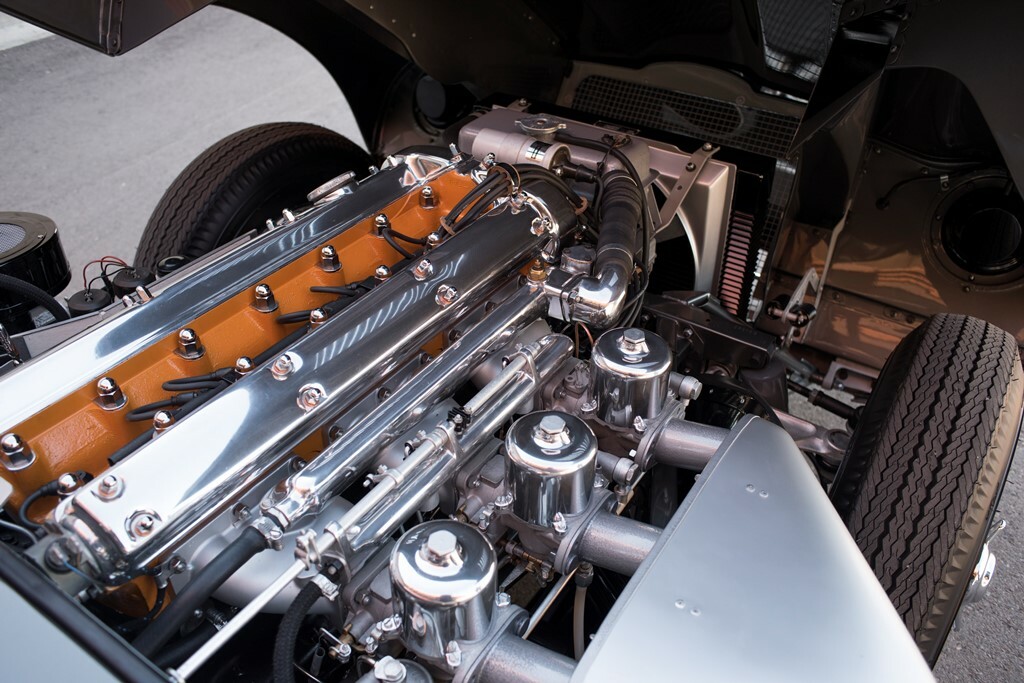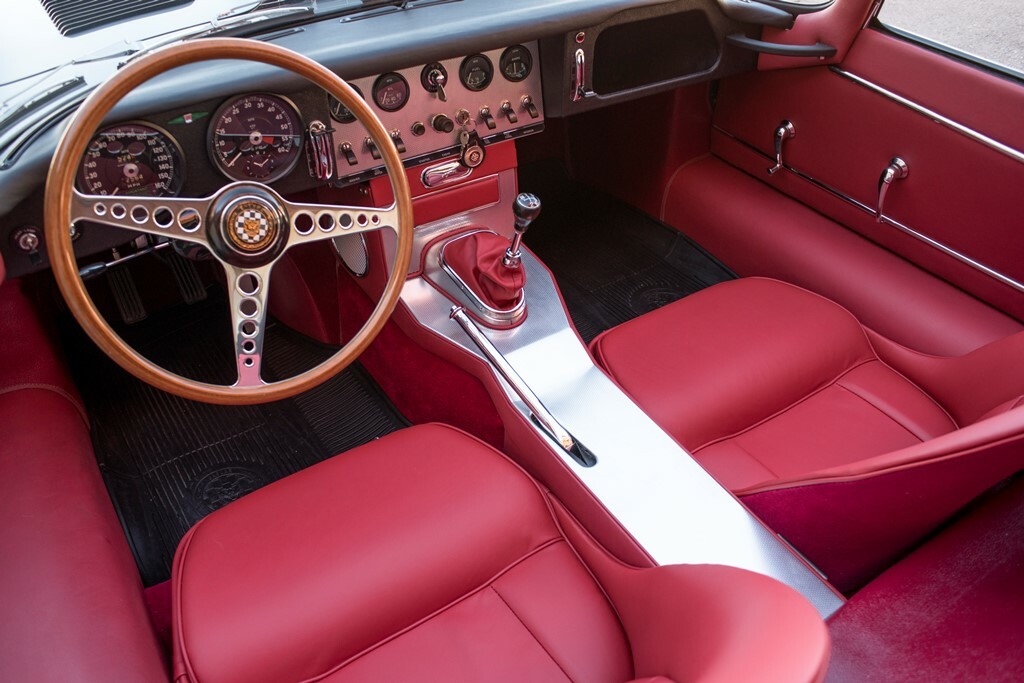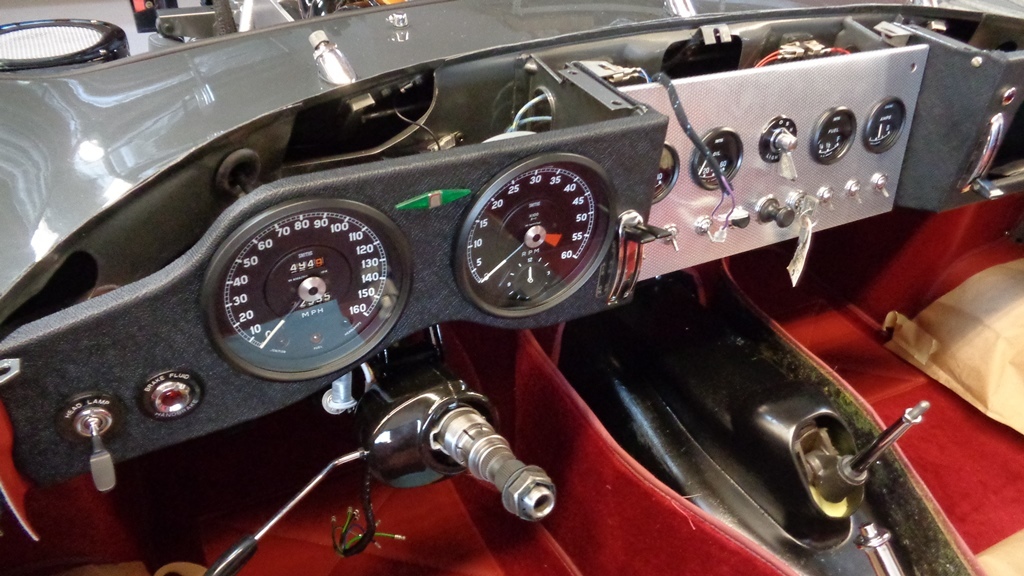This impeccable 1961 Jaguar XKE Roadster (Lot #1368.1) rolled across the block at the 45th Anniversary Barrett-Jackson Scottsdale Auction in January 2016.
The Jaguar XKE was an absolute bombshell when it first appeared in 1961, as marvelously advanced as the XK-120 had been a dozen years before. The new E-Type was more sophisticated, more reliable, quicker and faster than the $10,950 Mercedes-Benz 300SL, $11,000 Aston Martin DB-4, $12,000 Ferrari 250 GT or $13,000 Maserati 3500 GT. But an XKE cost just $5,670 when it landed in New York.
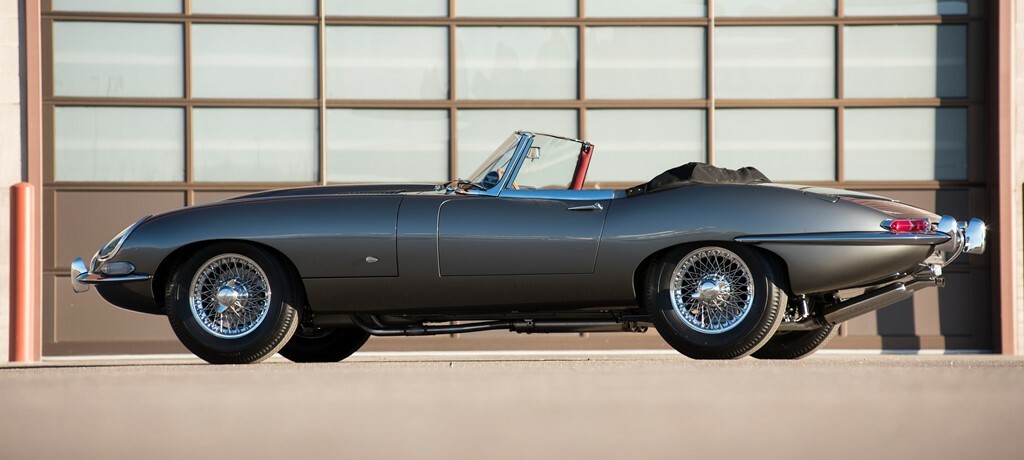 British former Formula One racing driver Sir Stirling Moss, a connoisseur of beauty of many kinds, humorously called the XKE “the ultimate crumpet collector.” Sir William Lyons, the leader of Jaguar, was a consummate stylist, while his pal Malcolm Sayer ‒ an aerodynamicist Jaguar had inherited from Bristol Aeroplane after World War II ‒ had a rare gift of creating shapes that were not only efficient but sexily beautiful.
British former Formula One racing driver Sir Stirling Moss, a connoisseur of beauty of many kinds, humorously called the XKE “the ultimate crumpet collector.” Sir William Lyons, the leader of Jaguar, was a consummate stylist, while his pal Malcolm Sayer ‒ an aerodynamicist Jaguar had inherited from Bristol Aeroplane after World War II ‒ had a rare gift of creating shapes that were not only efficient but sexily beautiful.
The E-Type is an obvious progression from Sayer’s C-Type and D-Type Jaguar racing cars, each one smoother and better looking than the previous model. The E-Type has it all. It’s truly elegant, but also has “come hither” written all over it. It isn’t inconspicuous, but it sure is pretty. It has the long hood/short deck proportions of sports cars from the 1920s; the tiny cockpit is tucked in the back and the long hood makes up half the total length. The E-Type is extravagant, streamlined, sensual and flamboyant.
But an XKE is not just about style. Jaguar chassis engineer William Heynes gave the XKE independent front and rear suspension, four-wheel disc brakes (inboard at the rear), a monocoque chassis derived from that on the D-type race car and the triple carburetor, 265hp, 3.8-liter XK inline-6 from the previous XK-150 S.
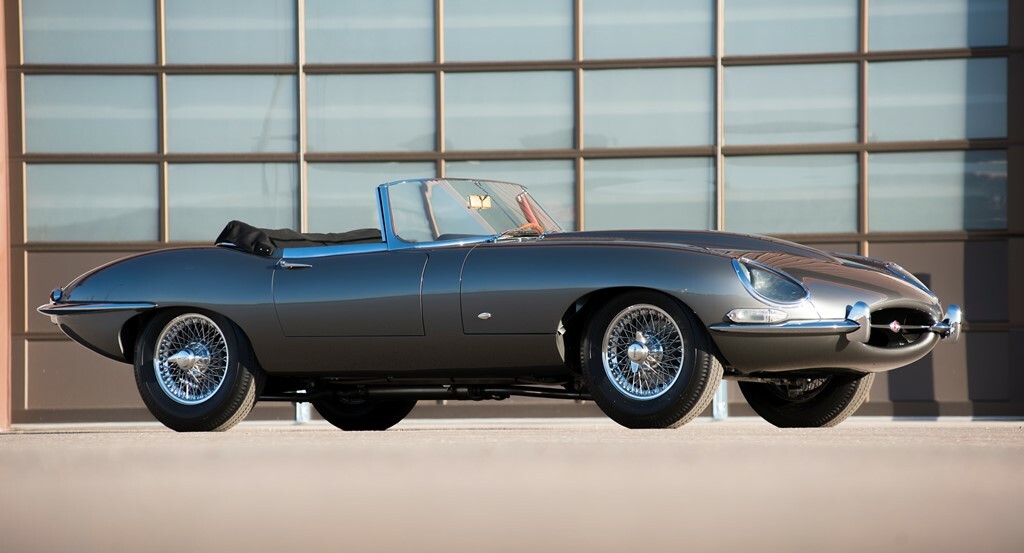 An early XKE will accelerate 0 to 60 in 6.5 seconds, through the quarter-mile in less than 16 seconds at over 90 mph and top 170 mph, depending on gearing. Six decades on, this is still very quick and fast. Indeed, name another car from 1961 that still looks modern, still looks sexy, is utterly timeless and is considered one of the ultimate cars of the first century of the automobile.
An early XKE will accelerate 0 to 60 in 6.5 seconds, through the quarter-mile in less than 16 seconds at over 90 mph and top 170 mph, depending on gearing. Six decades on, this is still very quick and fast. Indeed, name another car from 1961 that still looks modern, still looks sexy, is utterly timeless and is considered one of the ultimate cars of the first century of the automobile.
What makes this 1961 Jaguar XKE Roadster (Lot #1368.1) that was offered at Barrett-Jackson’s Scottsdale Auction so special? Well, XKE production started in March 1961. XKEs built before January 1962 had flat floors, after which the floors were stamped with a depression for more legroom. Even more rare, it was among the first 500 cars built during the spring of 1961 that had louvers welded into the hood and an external latch on each side to hold the sizeable hood closed. Later cars have integral louvers and hidden latches.
Of these 500 early production XKEs with external bonnet latches, welded louvers and flat floors, only 385 were left-hand-drive roadsters. This very early, very rare XKE open two-seater is Number 169 out of those 385, and still carries its original 3.8-liter engine, transmission and bodywork.
It’s been completely restored to the original color combination of Gunmetal Grey with red leather interior, black convertible top and chrome wire wheels. It has a Jaguar Heritage Certificate of Authenticity and, not to put too fine a point on it, is one of the ultimate XKEs for a Jaguar connoisseur. It is possible they don’t get any better than this.
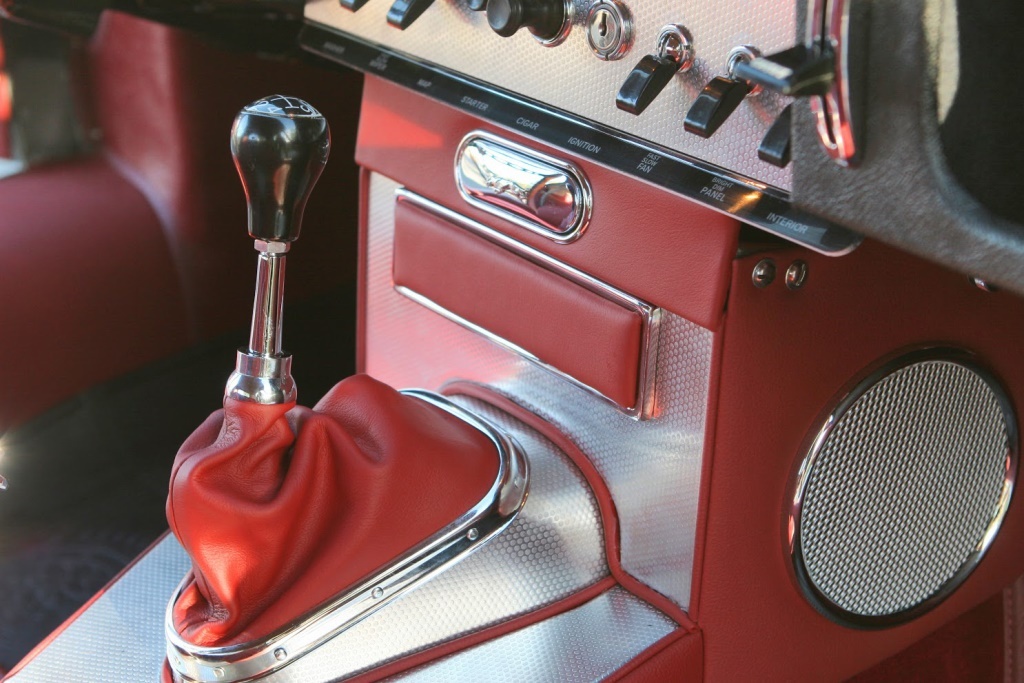 XKE #875169 was acquired in 2010 by Classic Showcase in Oceanside, California, specialists in Jaguar XKEs, with the deliberate aim of restoring it as a concours winner. The car was completely disassembled, stripped to bare metal, finished as needed, primed, sealed and sprayed in the original Gunmetal Grey.
XKE #875169 was acquired in 2010 by Classic Showcase in Oceanside, California, specialists in Jaguar XKEs, with the deliberate aim of restoring it as a concours winner. The car was completely disassembled, stripped to bare metal, finished as needed, primed, sealed and sprayed in the original Gunmetal Grey.
All mechanical systems were restored, all rubber parts replaced and all chrome replated to concours standards. The interior has been restored by master upholsterers in the original red leather. The engine compartment and chassis are as finely finished as the body and interior.
This XKE is ready to win the most demanding Jaguar club concours. Two JCNA judges independently judged the car, based on detailed photographic evidence, and it was without deduction, scoring a perfect 100 points both times. It boasts an amazing restoration on an incredibly rare model.
To say the restoration on this Jaguar was meticulous is somewhat of an understatement. As the saying goes, a picture is worth a thousand words ‒ check out a few restoration photos below.
– Written by independent automotive journalist Rich Taylor
